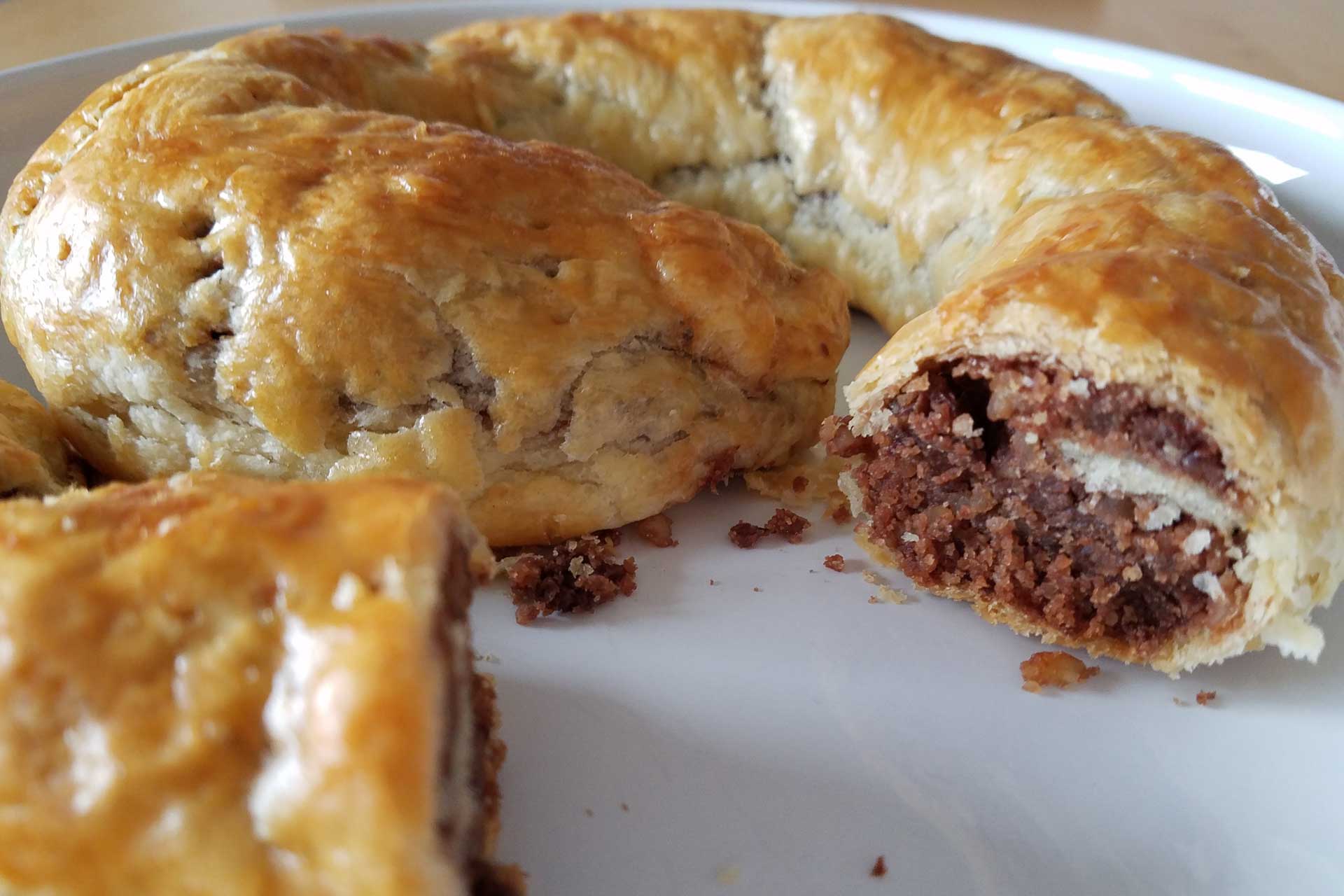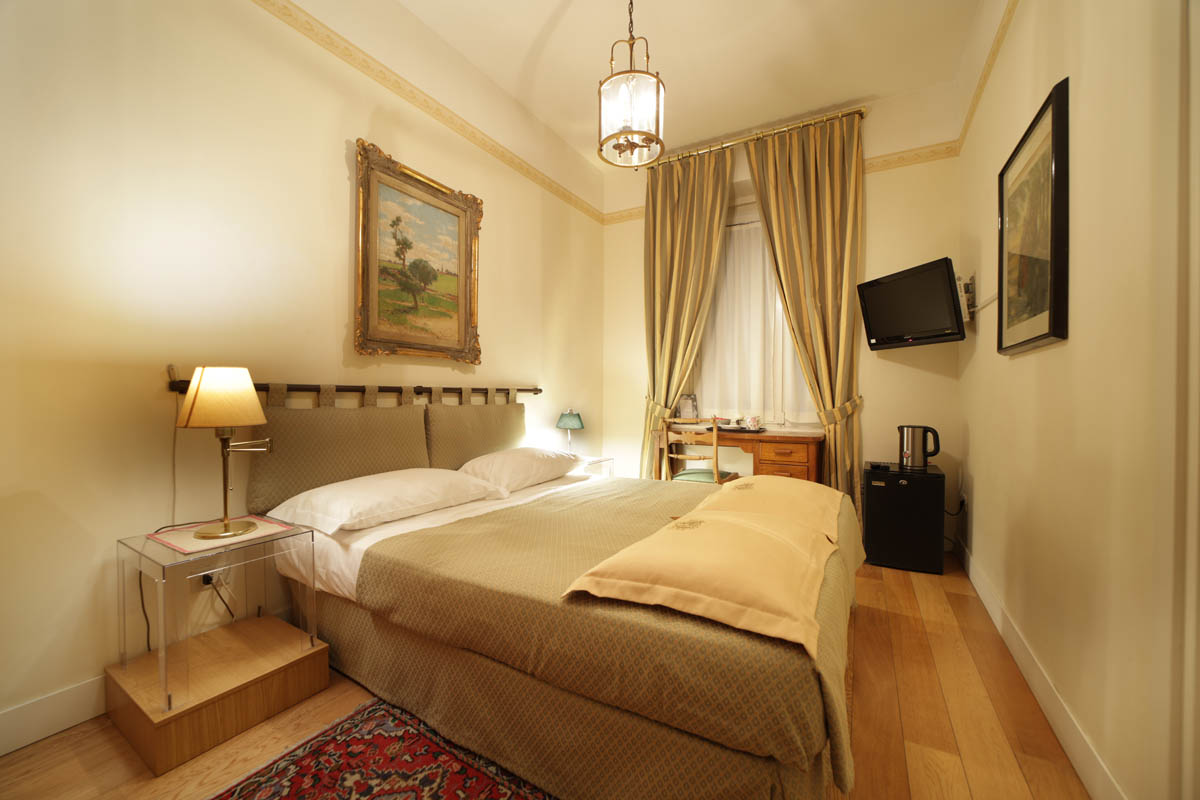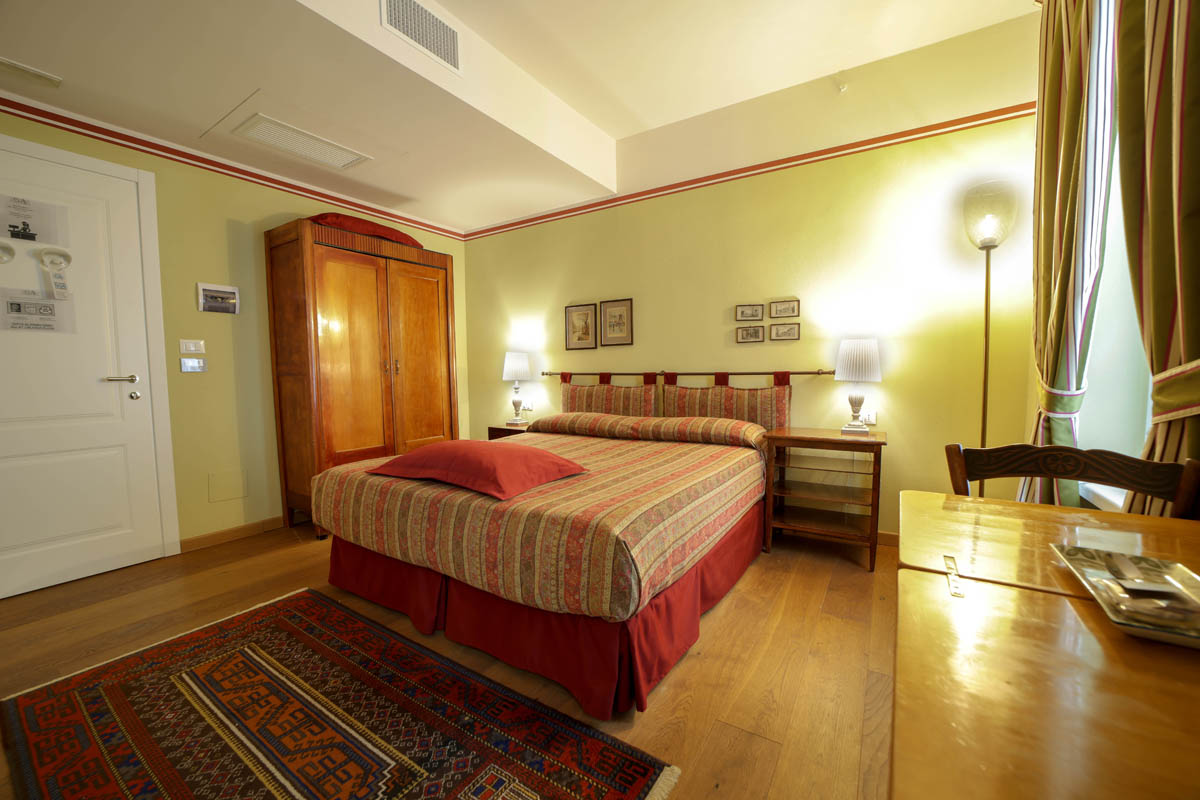Sweet, fragrant, and intriguing, the Presnitz is a traditional dessert of Trieste. It is eaten during the holiday period, with family, when you have time to dedicate yourself to your grandmother’s recipe. This dessert requires simple ingredients and a long preparation time: the true Presnitz indeed requires time and dedication.
Dried fruit and a curled shape
Like any self-respecting traditional dessert, there are a thousand types and variations, but one characteristic is mandatory: its spiral shape hides aromas and flavours that are released when cutting through the juicy filling of dried fruit and nuts.
The most common recipe is made with puff pastry, but shortcrust pastry and strucolo pastry can also be used Today, homemade Presnitz is often wrapped in pre-prepared dough, but let’s be honest: you can tell the difference, and that’s why it is more likely that a Triestino will buy it in a pastry shop, to honour such a special dessert.
Sissi or Carolina Augusta?
Like any typical dessert, the origins of Presnitz are debated. The most romantic version is linked to Habsburg Trieste and a pastry competition. It seems that the term Presnitz came from the title ‘Preis Prinzessin (Princess Prize)’, which common usage in Trieste shortened to a more catchy word. But who was the princess that brought our sweet roll to glory?
Two ladies contend for this distinction:
- Carolina Augusta, the wife of Francis I of Austria who visited the city with the emperor in 1832
- the inevitable Sissi, Elisabeth of Bavaria, who, during her visit in the mid-nineteenth century, saw a Trieste animated by craftsmanship and gastronomic competitions in her honour.
The coiled shape of the Presnitz symbolizes an invitation addressed to the ‘princess’ that was associated with the sweet: ‘If you go around the world, come back here’.
Anyone looking for a more scientific approach will be satisfied with a less pompous reading of the origins: the term Presnitz originated from the Slavic term ‘presnec‘, a diminutive used for unleavened bread.
Whatever its origin, Presnitz is a dessert to be enjoyed and an excellent idea for a souvenir.
Dorfles, Svevo, a Presnitz, and kitsch
We asked our Maurizio Stagni for some titbits about Presnitz. As always, Stagni entertained us with little-known stories about our city and its inhabitants. A very young Gillo Dorfles began using the word ‘kitsch‘ and introducing it into the Italian language long before the Anthology of Bad Taste in 1968.
Dorfles frequented Casa Veneziani, that is, the house of Italo Svevo and the ‘good salon’ of Trieste. He became very close friends with the writer but was not impressed by the aesthetics of the house. When he described Casa Veneziani, he recalled dark and gloomy furniture and a stained-glass window in bad taste, and mentioned a dessert with a not beautiful shape, burned and pitted, a spiral that was decidedly ‘kitschy’ but also very good, the Presnitz.
Where to buy it
Being a dessert with a thousand variations, Presnitz can satisfy everyone and no one because each pastry shop follows its own recipe. It is a dessert that started from a poverty tradition, but whose filling was gradually enriched in bourgeois homes with added ingredients from abroad because of the port: perhaps exotic elements like cocoa and candied fruit or more costly ingredients like biscuits and honey.
In Trieste, therefore, you can be pleased in almost all the pastry shops. Here’s a rundown of the best-known ones, to be on the safe side.
- Pirona – Largo della Barriera Vecchia, 12
- Viezzoli – Via della Cassa di Risparmio, 7
- Sircelli – Via Giacinto Gallina, 2
- Eppinger – Via Dante Alighieri, 2
- La Bomboniera – Via Trenta Ottobre, 3
- Giorgi – Via Giosuè Carducci, 14
- Cadenaro – Via Pierluigi da Palestrina, 4
- Jerian – Via di Cavana, 10
- Travan – Via S. Nicolò, 18
Let’s finish with a small suggestion: many pastry shops offer slices of Presnitz among their pastries, so it could be a fun to plan a tasting tour, preferably during a day of walking through Trieste with a very light lunch!



